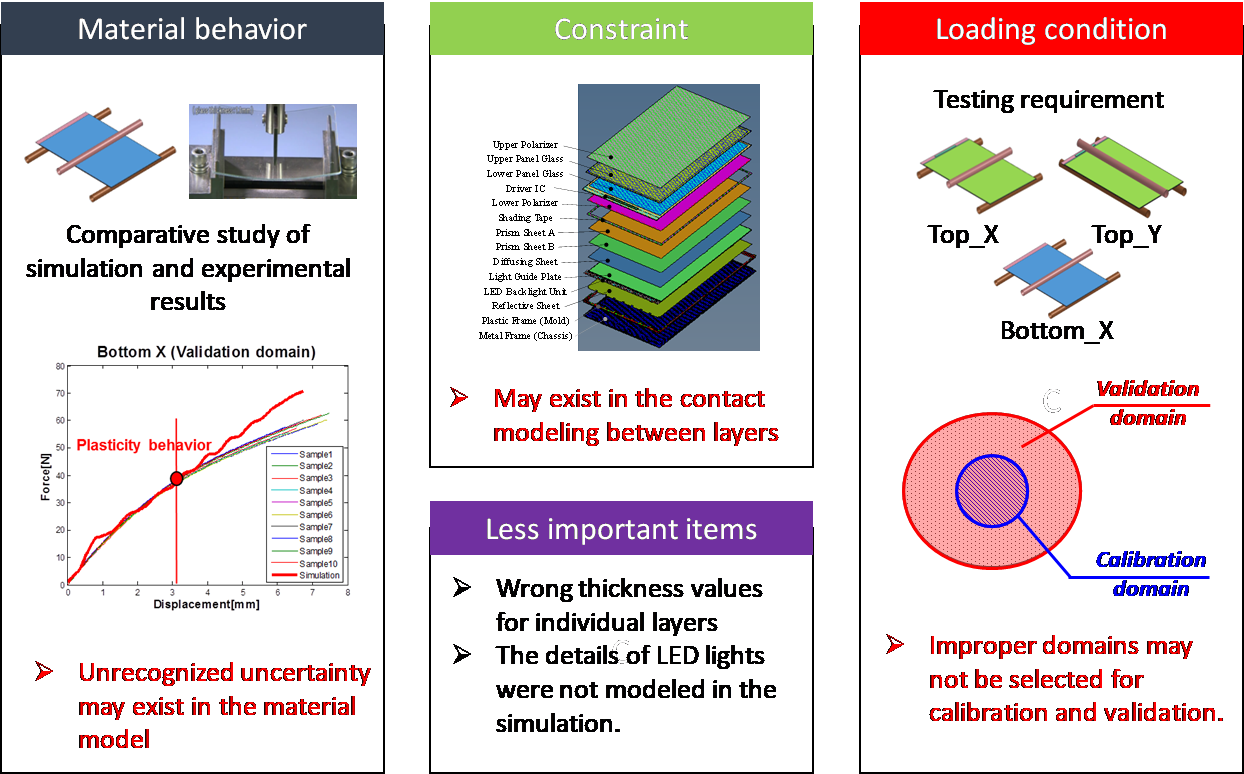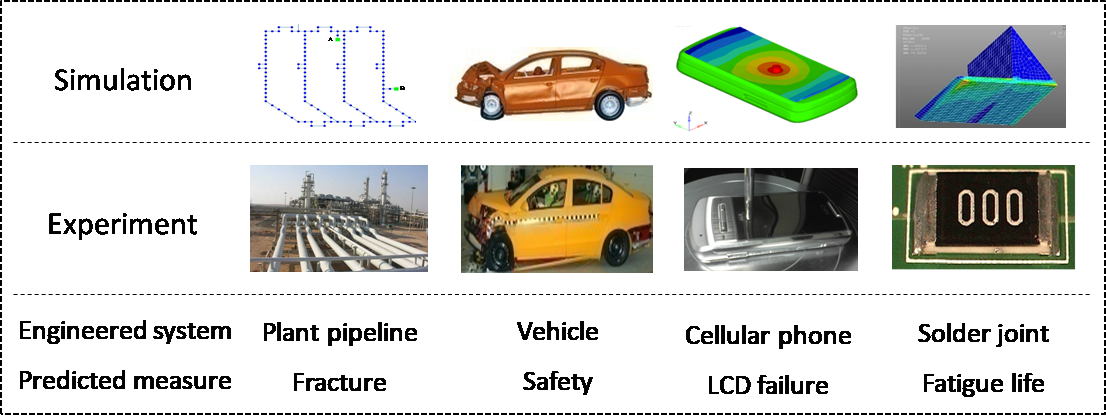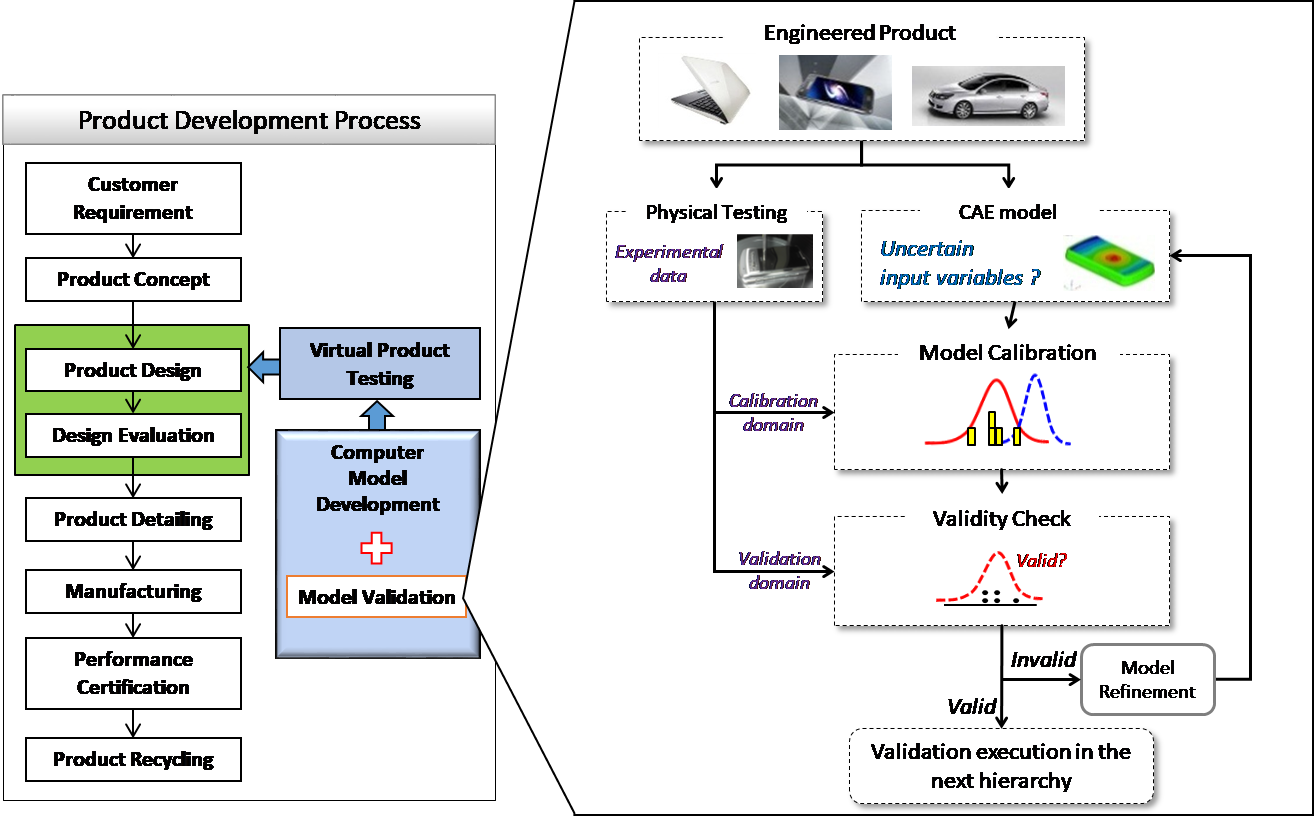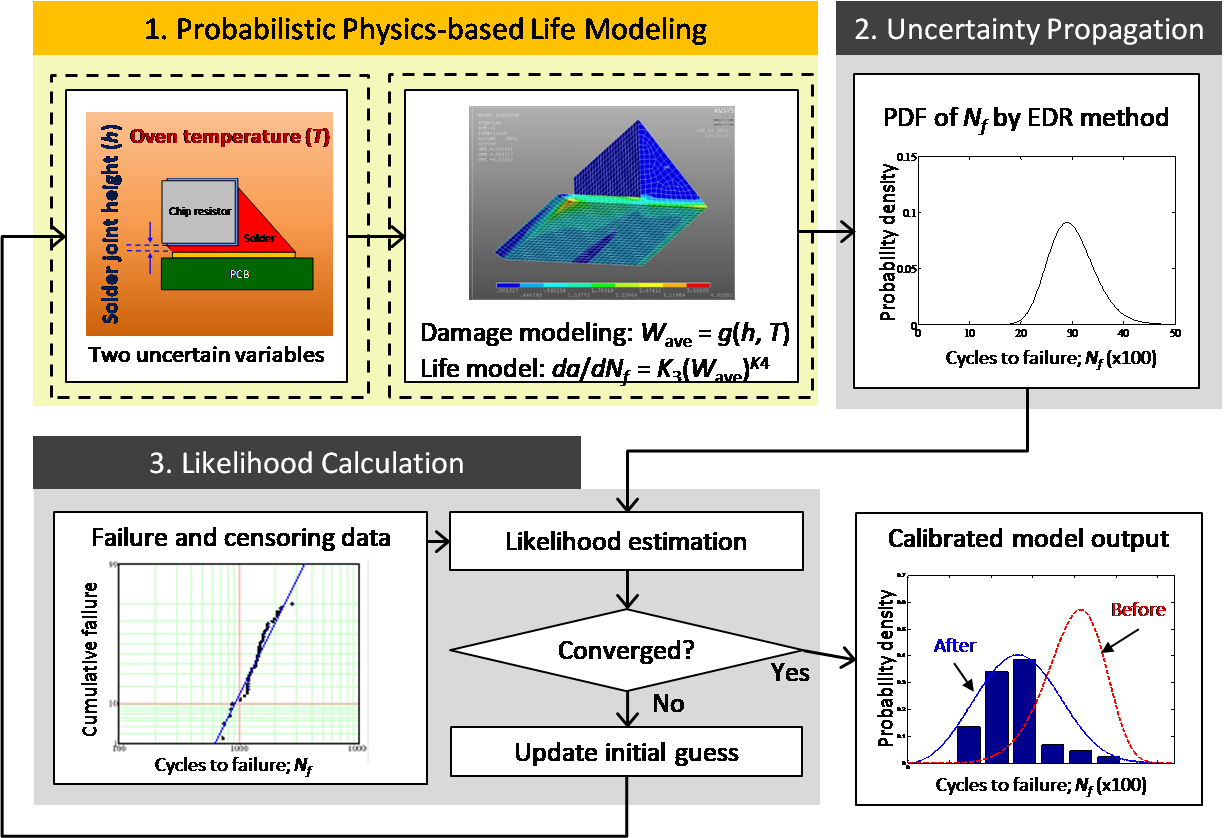Gwangju Institute of Science and Technology
Smart Diagnosis and Design Optimization Laboratory
> Research > Design under Uncertainty
Design under Uncertainty
The performance of engineered systems must be ensured in product development. The role of “virtual testing” has been increased significantly. Numerous engineered systems are tested by simulations to save costs and time.
For simulations, accuracy and predictability are utmost important. Nevertheless, it is still challenging to build a highly accurate computational model that emulates the behavior of real products. For example, the conclusion from simulations often disagree with that from experiments.
To improve the accuracy of computational models and thus improve their predictive capability, model verification and validation (V&V) have received significant research attention. Model validation is the process of determining whether a computational model is an exact representation of the real world from the perspective of the intended uses of the model.
Recently, stochastic model updating approaches are studied to find uncertain parameters of high-fidelity simulation models that emulate the behaviors of complex engineered systems. In the SDDO Lab, design under uncertainty is actively studied with real applications such as pipelines in petrochemical plants, solder joints of consumer electronics, etc.
H. Oh, et al., “Probabilistic Lifetime Prediction of Electronic Packages using Advanced Uncertainty Propagation and Model Calibration,” IEEE Transactions on Components, Packaging and Manufacturing Technology, Vol. 6, pp. 238-248, February 2016.

H. Oh, et al., "A Systematic Approach for Model Refinement Considering Blind and Recognized Uncertainties in Engineering Product Development," Structural and Multidisciplinary Optimization, Vol. 54, pp. 1527-1541, December 2016.





